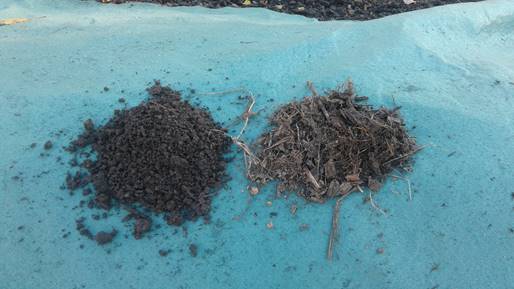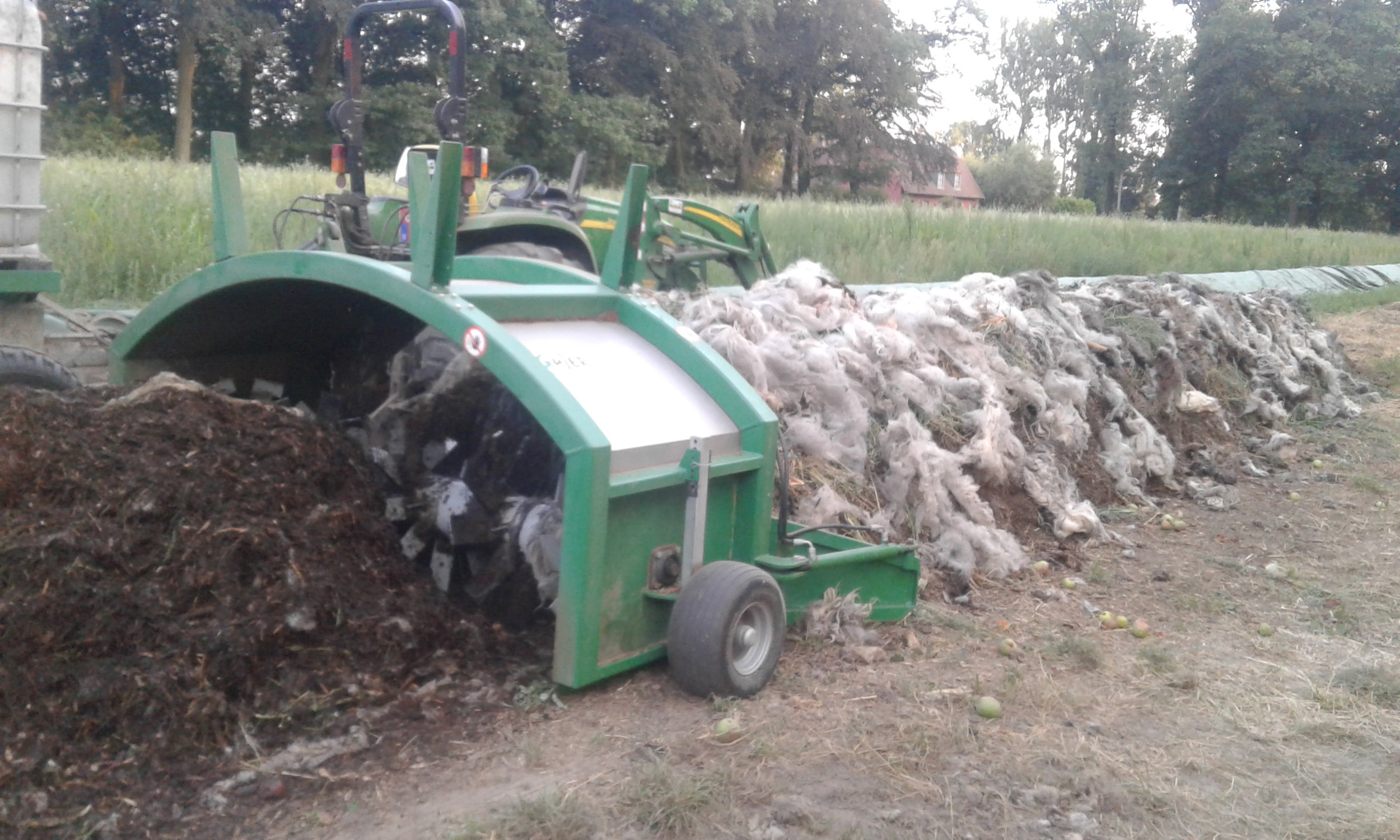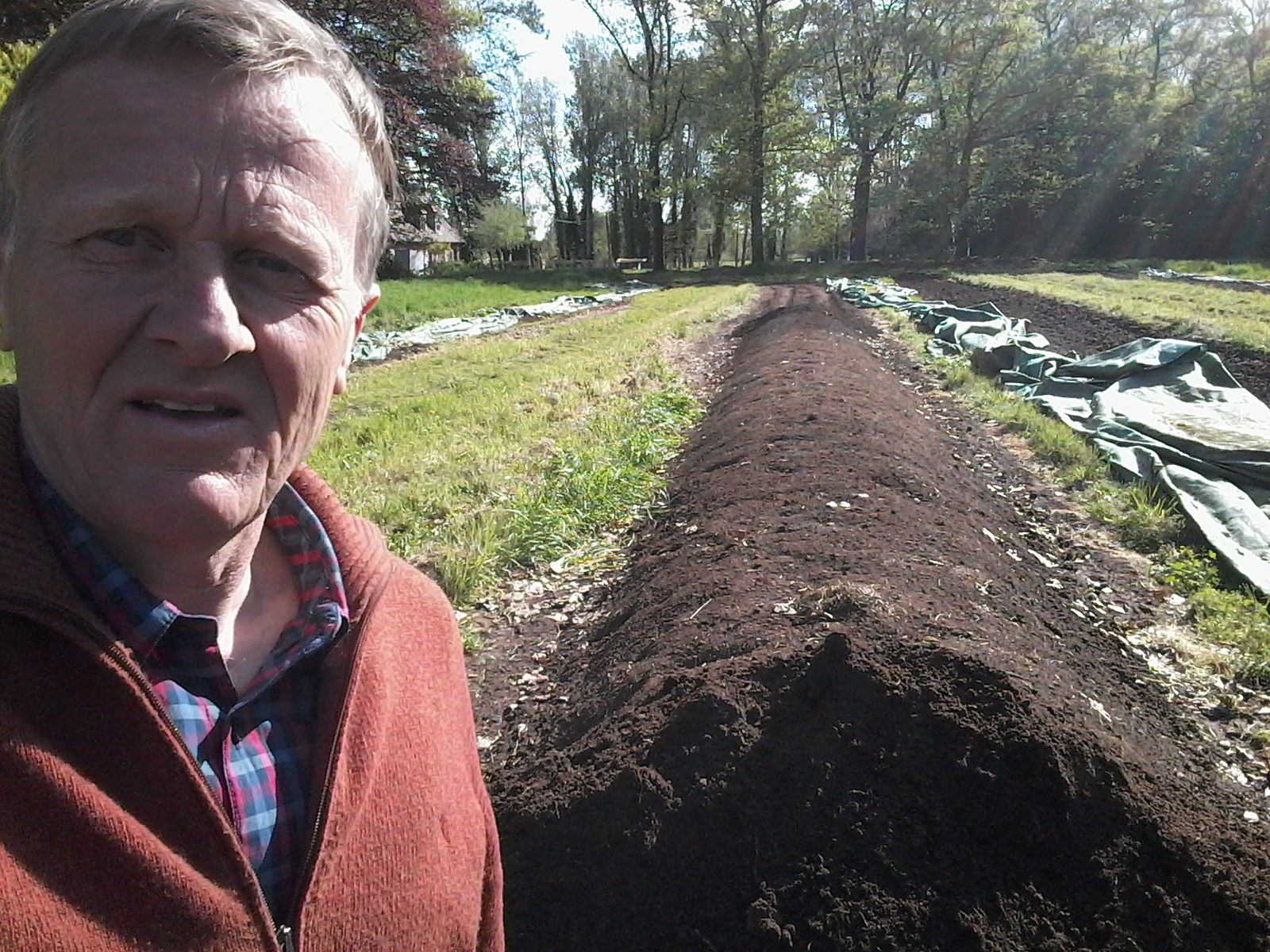marc verhofstede - belgium
Marc Verhofstade (www.bio-compost.be) is an organic farmer and a compost expert in Belgium. He advises gardeners, horticulturalists and farmers on different techniques to feed and improve the soil. He also consults on animal health issues in Belgium. He has been a real inspiration to us at The Land Gardeners.
Marc builds windrows on a large-scale for use on his farms using the following materials:
Carbon materials include:
Yard waste, straw, leaves, woody materials crushed with a hammer mill (note the wood should be young growth like tree branches, bushes, clippings. Old wood like tree trunks contain long-chain lignin structures which are very hard to decompose).
Carbon from straw is very good because it is more readily available to the process than carbon from green waste. It is always best to incorporate these dry materials such as straw by adding them in the bottom layers as the fact that they are light makes them hard to incorporate from the top down. Marc thus always begins his windrows with a layer of straw.
Nitrogen materials include:
Greens: the younger the greens the higher the nitrogen content. It thus depends on the growth stage of the plant as to how high the nitrogen content is at the time of harvest.
Adding fresh materials like a freshly cut green manure to a windrow will improve its overall quality. It is therefore very important to have fresh green materials available.
Manure does not count as a fresh material because it is always in some state of putrification.
Kitchen, fruit and vegetable waste (but do not add more than 10% kitchen waste by volume at once – and if kitchen waste is putrified it can inhibit the process so again, it is important to add fresh geen materials to compensate for this).
Soil addition
Soil is the last component that is added to a windrow.
Since soil is heavy, it is easier to blend it downwards when the windrow is turned so Marc always adds soil as the last layer. He chooses a loam or clay soil because the clay-minerals are necessary for the formation of a clay-humus-complex.
The soil addition must be 10% by volume.
Compost addition
Adding finished compost to a newly built windrow is particularly valuable (moisture balance, addition of microlife, nutrient supply, temperature regulation).
Pfeiffer-Lübke Starter
Finally Marc adds Pfeiffer-Lubke Starter inoculum which contains the essential microlife that is needed to digest organic materials optimally and to form high quality humus. The Starter is a powder in which the microorganisms are conserved. As soon as the microorganisms are exposed to water they are activated. By inoculating the compost, the materials immediately come into contact with the microlife contained in the starter.
Living conditions
It is essential to have both OXYGEN and proper MOISTURE in a quality composting process; hence the need to aerate the compost by turning it and watering it.
Another important factor is protection against rain, wind and drying out. This can be done with a compostcover Toptex, a special geo-textile developed for composting. Toptex is UV stabilised and keeps for a minimum of 5 years.
Dimensions
Marc builds long compost windrows ensuring they fall within the following perameters:
Maximum width 2.5 m/ 8 ft
Maximum height 1.4 m/4.5 ft
Daily monitoring of the compost process is a must.
There is no way of telling how warm the windrow is in the hottest section or what the concentration of CO2 is by looking at it. For this purpose Marc uses a digital compost thermometer and a CO2 – indicator.
It’s important to understand that if CO2 concentrations becomes too high, the aerobic microorganisms are suffocated and the process will revert to anaerobic conditions.
Application of compost
Marc applies the following application rates of compost to his fields:
Minimum maintenance level : 15-20 m³/ha/year
Soil building : 30 m³/ha/year
Serious soil building : 50 m³/ha/year
Green manure
Using cover crops mixes improves soil fertility and health. Green manure mixes include a proportion of quick-growing species to suppress weed growth and a broad diversity of species to guarantee good biodiversity and maximum variation in root development to ensure good soil penetration.
Green manures are also important because they provide food to microbes, thus enabling the microbes to perform many important functions in the soil.
With the Pfeiffer-Lübke Starter organic substances such as green manure are decomposed within a very short period of time and simultaneously transformed into humus, which prevents putrefaction in soils. In addition, soil is enriched with carbon and as a consequence it works against global warming. The positive side-effect of this process is the accumulation of carbon in soils, thus turning them into carbon sinks.
The Starter furthers the rapid decomposition of organic matter yet prevents the loss of nutrients and promotes high-quality humus formation. This formation of humus is beneficial to the ‘soil-whole’ and makes compost application far more sustainable.
The application of starter promotes the formation of stable humus and the tying in of nutrients.
Application rates for soils:
1 unit = 30 gr for 1000 m2
10 units = 300 gr for 1 ha
50 units = 1,500 g for 5 ha
Application rates for compost:
1 unit = 30 g for 1 m3
10 units = 300 gr for 10 m3
50 units = 1500 g for 50 m3
(a compost windrow with 50m length is usually about 75m3)
Recently Marc has been exploring using wool in his compost windrows which is composting well.



